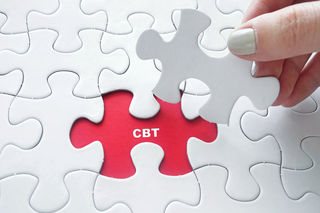Transference
Contrasting Schizoids and Avoidants on the Couch
There are clinical implications of the schizoid-avoidant distinction.
Posted October 23, 2019 Reviewed by Ekua Hagan

Schizoid and avoidant personality disorders can be conceptualized as sharing the trait of defensive detachment and the related expectations of rejection and dysphoria.
The avoidant individual’s experience is ego-dystonic (i.e., his/her social isolation is a source of emotional pain), whereas the schizoid individual’s isolation is more consistent with the rest of their personality traits, such as a lack of empathy and social anhedonia.
Psychodynamic Perspective
Schizoid and avoidant patients will evoke distinctive, counter-transference reactions in treatment providers, with the schizoid individual’s lack of empathy—detachment—as well as social withdrawal potentially experienced as aloof, indifferent, and accordingly hostile, as the schizoid patient may act with little regard for the feelings of others. However, the clinician should not forget that underneath their affective disconnection lies a belief in a rejecting world. Ther outward expression of affect is often dysphoric.
Patients with avoidant personalities have a much stronger drive towards relationships and longing for intimacy. Therefore, their withdrawal may be expressively connoted with dysphoric affect. Accordingly, the clinician may experience emotional pains—social discomfort—similar to the ones experienced by the patient, such as the feeling of being rejected.
Their psychological experience is one of intense conflict between a need for approval and closeness combined with fears of humiliation, punishment, rejection, and disapproval. In other words, their lack of comfort with what they desire may manifest itself in shyness, uneasiness, and—depending on severity—likely a few close, unconditional relationships with continual efforts at social acceptance.
It has been suggested that schizoid individuals are happy to be socially isolated and prefer solitude. However, recent research by Winarick & Bornstein (2015) suggests that individuals with schizoid traits are also dysphoric and hypersensitive to rejection. Their lack of empathy and detachment may be understood as reaction formations (a psychoanalytic defense mechanism)—defensively adopting the opposite attitude of one that is too emotionally powerful and destabilizing.
Psychodynamic psychotherapy has been shown to improve defensive functioning, and a case study reports improved defensive functioning with an avoidant personality disorder. Psychodynamic techniques aimed at enhancing ego functioning and CBT techniques that build coping skills would benefit both types of individuals. With schizoid patients, building empathy should be a major goal, whereas social skills training would be more appropriate for avoidant patients.
Psychodynamic approaches that emphasize different ways of addressing and working with the transference-countertransference relationship or therapeutic alliance should be utilized with schizoid patients, as building empathy requires a trusting, mutually caring relationship and supportive techniques.

Cognitive-Behavioral Therapy (CBT) View
Cognitive-behavioral therapy (CBT) conceptualizes patterns of personality pathology according to core beliefs. The schizoid and avoidant individuals share the core belief, “If I try to socialize, I will be rejected,” or “If I try, I will fail.” Cognitive-behavioral techniques, such as identifying automatic thoughts and challenging dysfunctional core beliefs, may be useful for both personality types.
CBT clinicians working with avoidant individuals may do well to focus on classifying their expectations of rejection as a form of cognitive bias, providing evidence against their expectations (e.g., in-vivo, i.e., therapists are warm, caring, supportive), and facilitating the patient generating a new, adaptive replacement thought. CBT and psychodynamic therapists working with schizoid patients may get good results by encouraging patient participation in pleasurable solitary activities.


